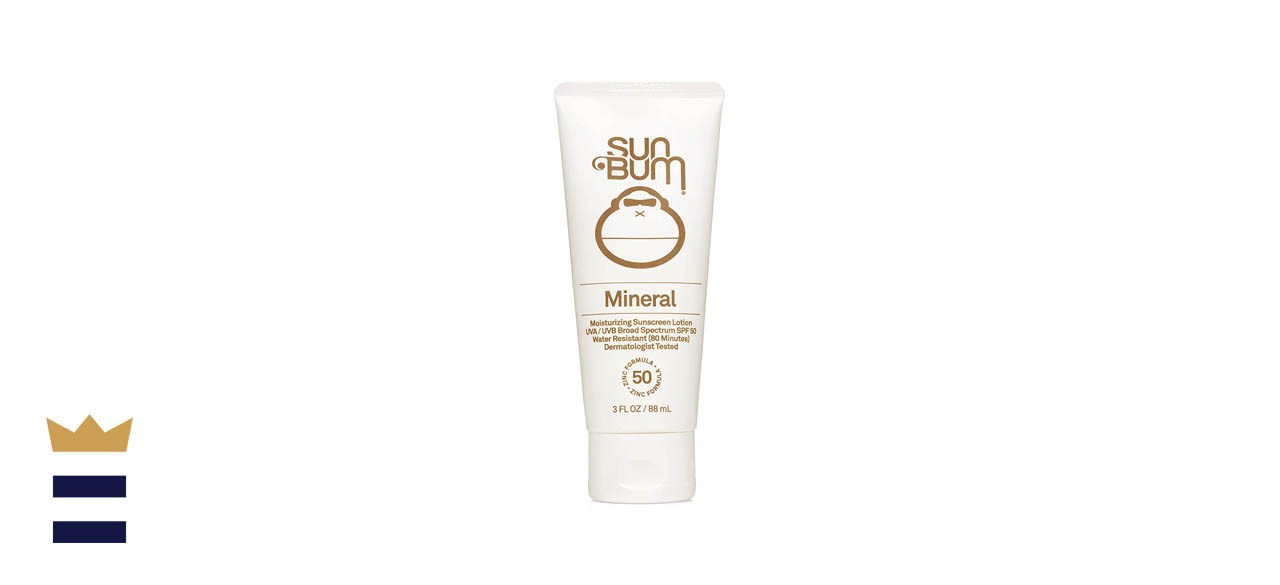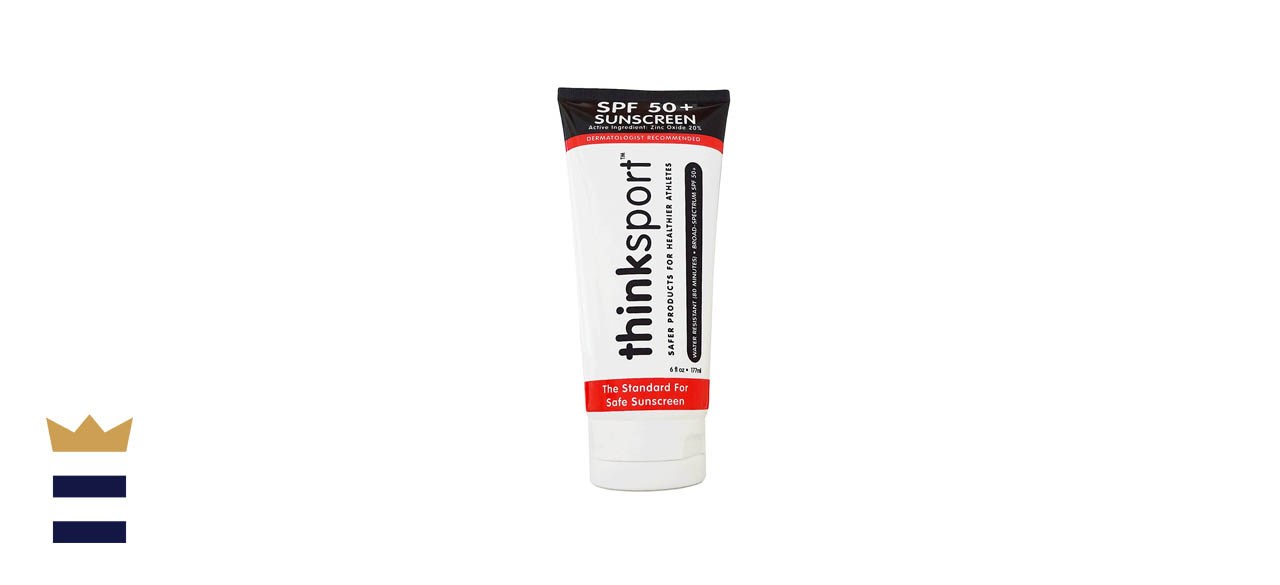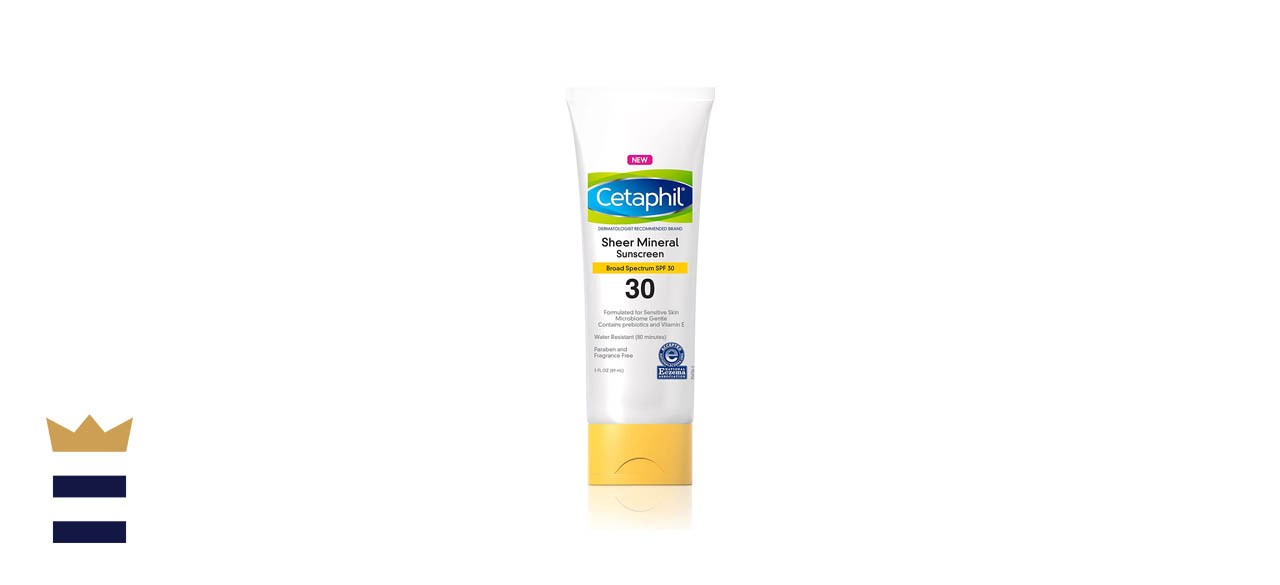Which mineral sunscreen is best?
Excessive exposure to the sun’s UV rays harms skin in many ways. It can cause wrinkles, sun spots, uneven skin tone and general premature aging. Most of all, it can contribute to skin cancer. If you want to keep your skin both healthy and looking young, you’ll want to make sure to apply that sunscreen liberally anytime you’ll be spending a lot of time outdoors.
When it comes to sunscreen, you have two choices: chemical or mineral. The former is bad for the environment and potentially bad for you, too. The latter is neither of those things, which should make the choice pretty easy. One of the biggest drawbacks to mineral sunscreens is they tend to leave your skin with a white cast. However, there are a few options like the top choice Sun Bum Mineral SPF 50 that go on nearly as clear as chemical sunscreens.
What to know before you buy a mineral sunscreen
How mineral sunscreen differs from chemical sunscreen
Sunscreen can broadly be classified into two distinct categories: mineral sunscreens and chemical sunscreens.
Mineral sunscreens use either titanium dioxide or zinc oxide as its protective agent, both of which are designed to create a physical barrier against the sun’s rays.
Conversely, chemical sunscreens use chemicals like avobenzone, oxybenzone, octisalate and octinoxate as their protective agents. Rather than sitting on your skin to create a physical barrier like mineral sunscreens, these chemicals are absorbed into the skin where they can absorb the sun’s rays and evaporate them back out of your body as heat.
The reasons behind the rise in popularity of mineral sunscreens lately are two-fold. First, though no science exists to support this conclusion, many people worry that chemical sunscreens might be absorbed into the bloodstream, potentially leading to future health issues. Second, mineral sunscreens are safe for coral reefs, whereas chemical sunscreens are known to cause bleaching. This latter reason is why many chemical sunscreens are banned in Hawaii and some other places popular for tourists, sunbathers and swimmers.
Protective agent
Mineral sunscreens use either zinc oxide or titanium dioxide as their protective agent. Both are effective at blocking ultraviolet rays, but zinc oxide has a slight edge because it offers better broad-spectrum coverage.
Many people prefer titanium oxide sunscreens because they don’t create quite as much of the telltale white cast for which mineral sunscreens are known.
Another option is to choose a product that contains both ingredients, which can offer optimal protection and potentially leave less of the unattractive white cast.
What to look for in a quality mineral sunscreen
SPF
SPF stands for sun protection factor, and it is a measurement of how much of the sun’s UVB rays a particular sunscreen can block. Most people will want to opt for sunscreen with an SPF 30 or SPF 50 rating. The former protects you from 97% of UVB rays, and the latter protects you from 98%. You can find sunscreens with SPF ratings as high as 100, but the additional protection offered by this is so minimal that they aren’t worth the added cost.
Water resistance
Not all mineral sunscreens are water-resistant, so if you are planning on any water-based activities, it is important to read the product label of any option you are considering.
You should also note that even those mineral sunscreens that are waterproof vary in how long they last when exposed to water. Some may only last for 40 minutes, while others can last as long as 80 minutes.
Additional ingredients
In addition to their protective agents, some sunscreens contain additional ingredients to nourish the skin. These may include things like hyaluronic acid, vitamin E and even aloe vera. You can also find mineral sunscreens that are tinted with color so they don’t produce as much of a white cast.
How much can you expect to spend on a mineral sunscreen
Expect to spend $3-$25 per ounce for a quality mineral sunscreen.
Mineral sunscreen FAQ
Why do mineral sunscreens leave a white cast on your skin?
A. Titanium dioxide and zinc oxide are both white. Since mineral sunscreens physically sit on the skin to protect it rather than being completely absorbed like chemical sunscreens, they cause the skin to have a white cast. Though unavoidable, some options cause less of a white cast than others.
Does mineral sunscreen protection as well as chemical sunscreen?
A. Despite the claims of mineral sunscreen manufacturers, the truth is they don’t protect quite as well as the chemical varieties. That said, this doesn’t mean they can’t offer adequate protection, but you may need to apply them thicker and reapply them more often.
What is the best mineral sunscreen to buy?
Top mineral sunscreen
Sun Bum Mineral SPF 50 Sunscreen
What you need to know: Sun Bum mineral sunscreen lasts for up to two hours after each application, yet is thin enough that it spreads easily for even application.
What you’ll love: It goes on almost as clear as a chemical sunscreen.
What you should consider: Some found the coconut scent overpowering.
Where to buy: Sold by Amazon
Top mineral sunscreen for the money
What you need to know: This cruelty-free option has a high SPF rating and is free from parabens, phthalates and other potentially harmful chemicals.
What you’ll love: It shouldn’t cause irritation for most people with sensitive skin, including young children, and it doesn’t leave behind an oily feel.
What you should consider: It doesn’t rub in well and leaves a very noticeable white cast on skin.
Where to buy: Sold by Amazon
Worth checking out
Cetaphil Sheer Mineral Sunscreen
What you need to know: Cetaphil’s mineral sunscreen nourishes the skin with aloe and vitamin E while protecting it from the sun’s harmful rays.
What you’ll love: It is water resistant for up to 80 minutes and contains both zinc oxide and titanium dioxide for optimal protection.
What you should consider: It has a thick consistency and may be difficult to apply evenly.
Where to buy: Sold by Amazon
Sign up here to receive the BestReviews weekly newsletter for useful advice on new products and noteworthy deals.
Brett Dvoretz writes for BestReviews. BestReviews has helped millions of consumers simplify their purchasing decisions, saving them time and money.
Copyright 2021 BestReviews, a Nexstar company. All rights reserved.











